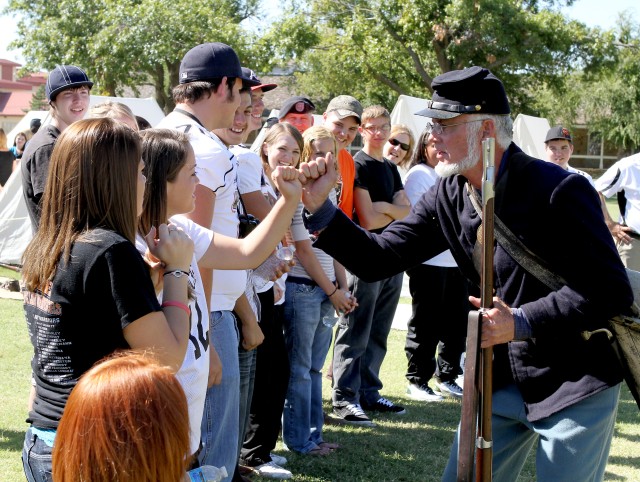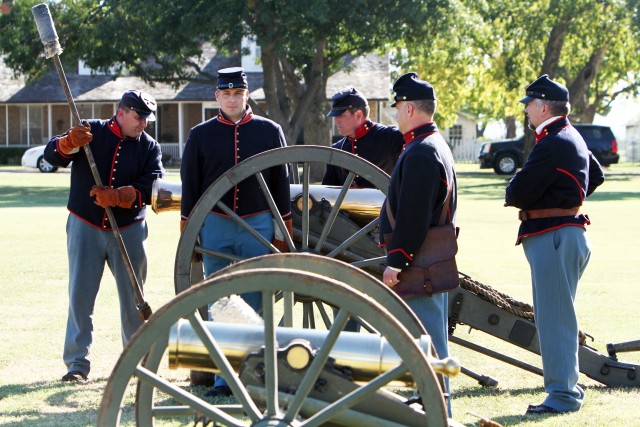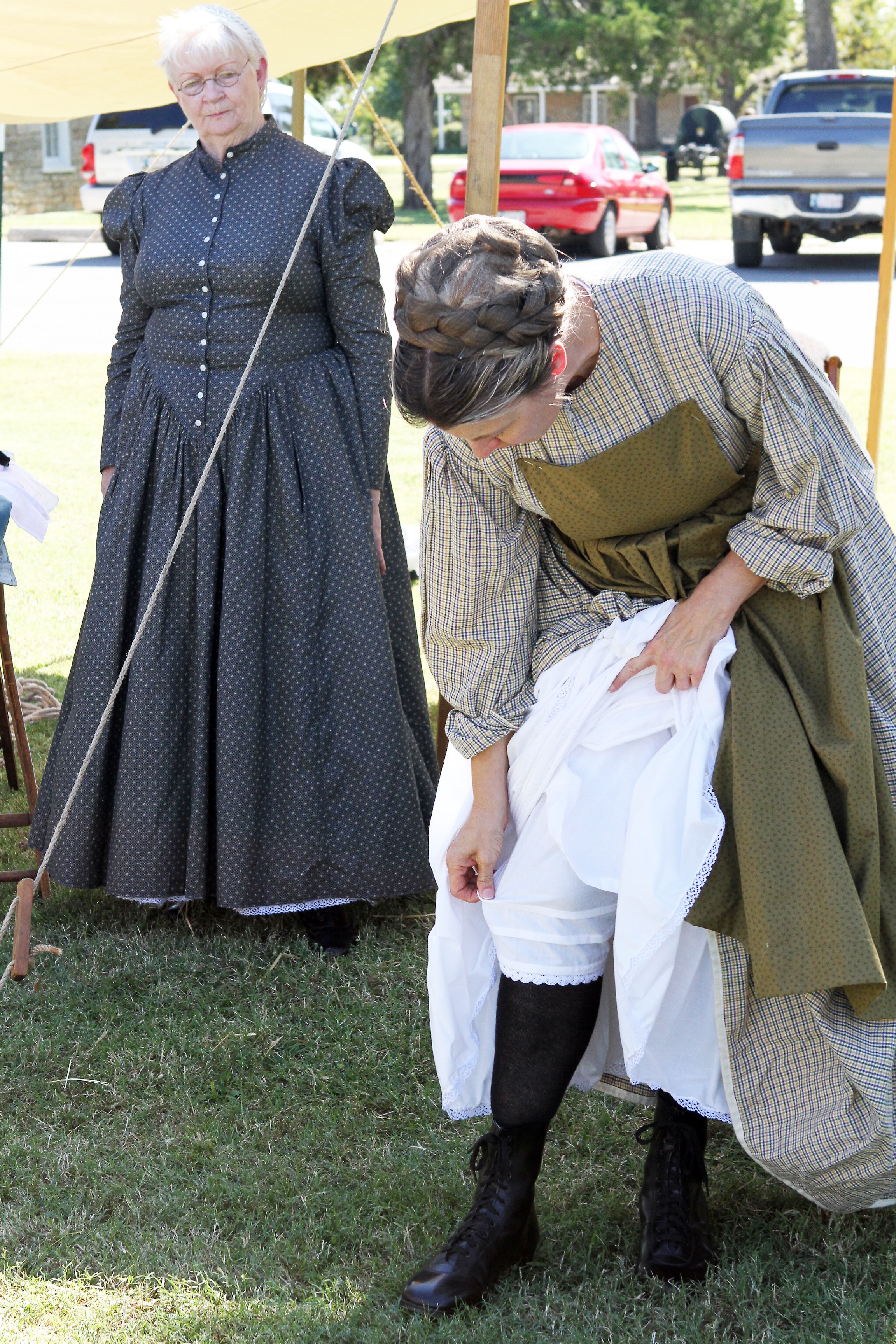FORT SILL, Okla. -- Imagine a time when there were no supercenters, no drive-throughs and no electronics.
Army Frontier Days painted that picture for the public Oct. 15 and 16 as re-enactors from on and off post played artillerymen, cavalrymen, infantrymen, scouts and laundresses. Young and old alike got a taste of what used to be the frontier as they walked around the Old Post Quadrangle where tents and Soldiers dressed in wool uniforms performed tasks as if they were in the 1860s-1870s.
"The wool-obviously in the wintertime you're happy to have it. But in the summer time it's really not that bad because it actually keeps the heat out. Yes, it makes you sweat but the wool wicks it away from you," said Lt. Col. Jeffrey Nester, Headquarters Detachment.
Nester said the uniform also protected Soldiers from the flash of their weapons as he prepared for his role in an artillery demonstration. Four Soldiers flanked a mountain howitzer as each of their roles were explained. Nester handed the number two man a round and it was seated and loaded. After it was properly sited the number four man pulled a lanyard as the others plugged their ears and the artillery demonstration concluded with a bang.
In between the canon and row of tents were women dressed in long dresses and bonnets. Lori Siltman, Trinity Christian Academy history teacher, and Alma Shappel played the role of laundresses. To keep the Soldiers' clothes clean and looking good, the laundresses traveled with the troops and were paid a wage of $1 per month for each Soldier's laundry. Laundry was more than just a chore at the time as the women had to make their own soap and starch, and it took them about 30 minutes to iron just one pair of pants.
From cleaning clothes to making ammunition, women also supported Soldiers by making the cartridges used for shooting the enemy. Although it was not made at Fort Sill, the Soldiers who established the fort carried the ammunition with them as they were settling the land and securing the reservations.
Cal Kinzer, Oklahoma State University Institute of Technology history instructor, explained how the 1864 Springfield rifle was used by infantrymen when Fort Sill was founded in 1869.
"St. Louis was one of many places where ammunition was distributed. The ammunition would be issued out in boxes with 1,000 rounds of ammunition in each box. A Soldier would normally carry 40 rounds but if they were expecting a major battle they would just get extra packages and put them in their pockets or their knapsacks," said Kinzer.
Looking at the living arrangements made some in the crowd think modern day camping was a luxury in comparison.
"They couldn't believe there was no running water or bathrooms inside," said Michelle Mabry, facility operation specialist.
As far as living back in the 1860s, Apache High School student, Sara Cramer, said she would not have enjoyed it.
"I wouldn't like it because we're kind of spoiled in our generation. It would have been hard."
In front of the barracks sat re-enactors for K Company, 4th U.S. Cavalry. With their horses tied to a tree, they explained their role in patrolling the land.
"It's after the Civil War. They didn't have anything to do so they came out and settled the west," said T.E. Mayo, auctioneer. "One of the main roles the cavalry was used for was as scouts. They would ride in front of the armies and send couriers back to tell them, 'OK, we have an enemy force up here and this is what they've got."
He said they also helped in the search for Geronimo.
Although the cavalry was on horseback, other scout re-enactors stated mules were their ride of choice.
"George Crook, the guy responsible for talking Geronimo into coming in and giving up, rode a mule," said Tim Poteete, Museum of the Great Plains living history interpreter.
Although Geronimo never went through with it, Poteete went on to explain that mules are more even tempered than horses even though horses became more popular as time went on.
Although the Frontier Army Days were meant to show the difference in the way Soldiers lived and fought when Fort Sill came to be, there were some themes that have lasted into today's troops. Like the idea of a battle-buddy, known back then as "pards."
"It's a lonely time. A lot of young men leaving home for the first time 16, 17, 18 years old. And men left their families, their wives, their children. These men needed camaraderie. So they shortened the word partner and it became a more endearing word-"pards." So during the hard times of training and in the hard times of battle and the fatigue of long marches they had their "pards" to lean on," said Cleon Plunk, Fort Sill Museum volunteer.
Frank Siltman, Fort Sill Museum director also believes there are things that transcended through time. Namely a Soldier's willingness to get the job done.
"There are timeless principles of soldiering. Whether it's today in Iraq or Afghanistan or in 1869 on the frontier. Soldiers are going off into distant locations and they've got to function as a unit," said Siltman. "Life was hard and yet people were willing to be here to do their jobs."








Social Sharing